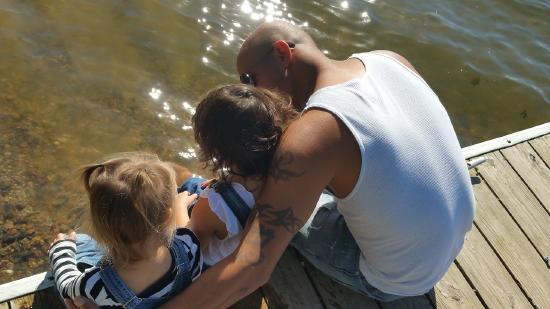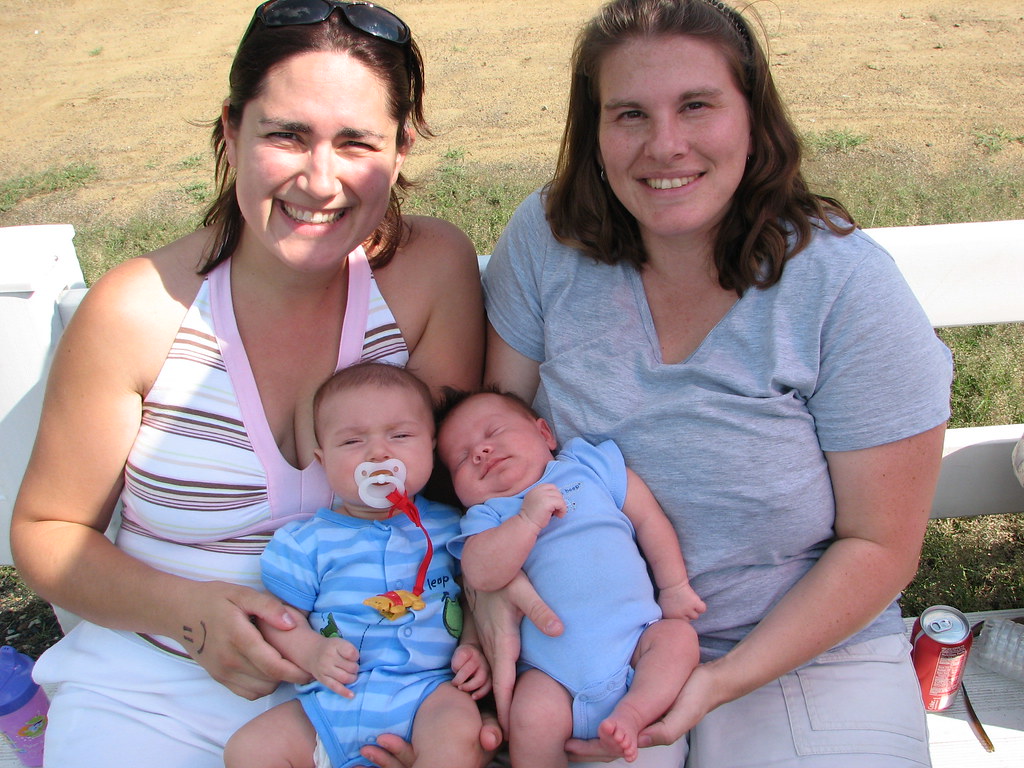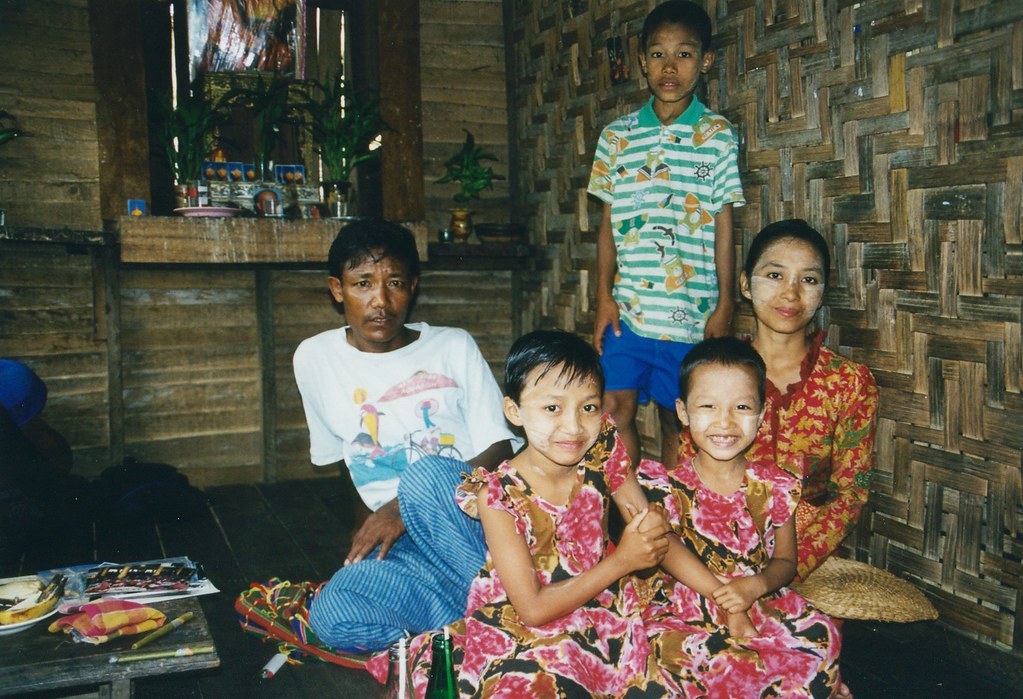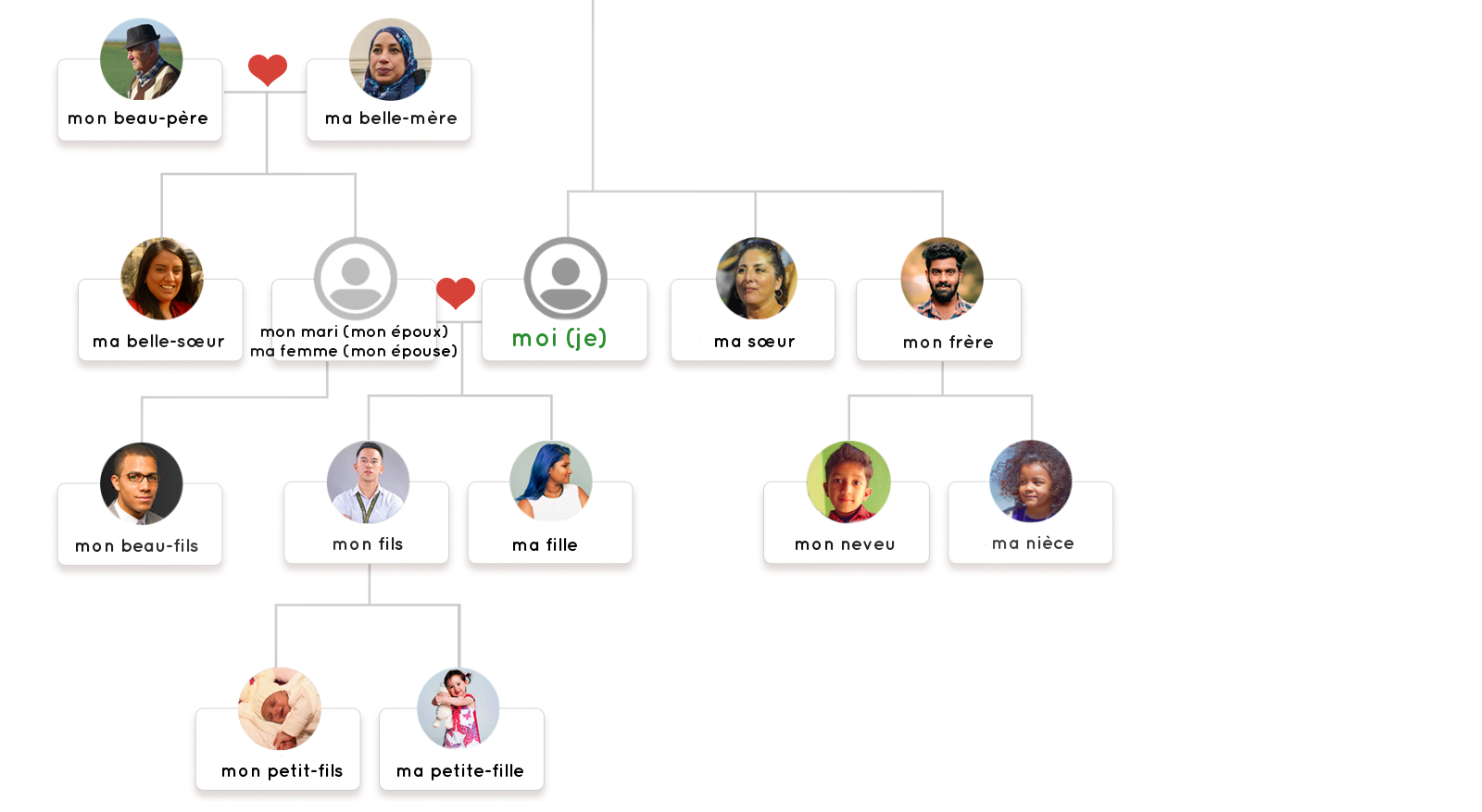3.1: La famille
- Page ID
- 157819
In this section, you will learn how to:
- Identify family members
- Talk about family relations using possessive adjectives
Listen to the audio clips that follow on this page to hear the French pronunciation of vocabulary and examples presented.
On étudie !






In this section, we are going to talk about our families. Here's some vocabulary to know:
.png?revision=1)
-----------------------------

| Français | English |
|---|---|
| la mère | mother |
| la belle-mère | mother-in-law, stepmother |
| le père | father |
| le beau-père | father-in-law, stepfather |
| le mari, la femme | husband, wife |
| la sœur, la demi-sœur, la belle-sœur | sister, half-sister, sister-in-law |
| le frère, le demi-frère, le beau-frère | brother, half-brother, brother-in-law |
| les enfants | children |
| la fille, la belle-fille | daughter, stepdaughter |
| le fils, le beau-fils | son, stepson |
| le grand-père, la grand-mère | grandfather, grandmother |
| le petit-fils, la petite-fille | grandson, granddaughter |
| l'oncle, la tante | uncle, aunt |
| le neveu, la nièce | nephew, niece |
| le cousin, la cousine | cousin (m.), cousin (f.) |
| le jumeau, la jumelle | twin (m.), twin (f.) |
Listen and practice pronouncing these words here: la famille
Go to this link and click on each family member and you will hear how the word is pronounced.
You can identify which side of the family your grandparents are from with the adjectives paternel(le), maternel(le):
| Mother's side of the family | Father's side of the family |
|---|---|
| grand-mère maternelle | grand-mère paternelle |
| grand-père maternel | grand-père paternel |
You can also distinguish between your famille proche (immediate family) and your famille éloignée (distant family).
To highlight ages differences among siblings you can use the adjectives aîné(e) (older, born earlier) and cadet(te) (younger, born later)*. You could also use the adjectives grand(e) vs. petit(e):
| brother | sister | |
|---|---|---|
| older | frère aîné | sœur aînée |
| younger | frère cadet | sœur cadette |
| brother | sister | |
|---|---|---|
| older | grand frère | grande sœur |
| younger | petit frère | petite sœur |
* If there are 3 siblings, then the oldest is called l’aîné(e), the middle child is called le cadet, la cadette, and the youngest one is called le benjamin, la benjamine.
Types de famille
| Français | Anglais |
|---|---|
| famille nucléaire | nuclear family |
| famille étendue | extended family |
| famille en union libre | non-marital family |
| famille monoparentale | single-parent family |
| famille homoparentale | homoparental, same-sex parent family |
| famille adoptive | adoptive family |
| famille d'accueil | foster family |
| famille pacsée | family with parents in a civil union |
| famille polygame | polygamous family |
| famille tribu | tribal family |
| famille avec des parents séparés | family with separated parents |
| famille divorcée | family with divorced parents |
Here is some additional vocabulary that may be useful:
| Français | Anglais |
|---|---|
| épouser | to marry |
| divorcer | to divorce |
| voisin(e) | neighbor |
| célibataire | single |
| divorcé(e) | divorced |
| fiancé(e) | engaged |
| marié(e) | married |
| séparé(e) | separated |
| veuf, veuve | widowed |
Study the Quizlet vocabulary flashcards. Listen and repeat the French pronunciation.
Watch these videos to practice talking about your family:
| Pronoms sujets | Masculin singulier | Féminin singulier | Pluriel | Anglais |
|---|---|---|---|---|
| je | mon* | ma | mes | my |
| tu (familier singulier) | ton* | ta | tes | your |
| il, elle, on | son* | sa | ses | his or her or its |
| nous | notre | notre | nos | our |
| vous (1 personne formelle ou pluriel) | votre | votre | vos | your |
| ils, elles | leur | leur | leurs | their |
Pour en savoir plus.
*mon, ton, son is used with feminine singular nouns starting with a vowel or h to help pronunciation: mon amie, ton histoire, son étudiante.
On pratique ! (Practice only-not graded)
Activité A
Parle-moi de ta famille.
Étudiant(e) 1 : Parle-moi de ta famille. Est-ce que tu as des frères et sœurs ?
Étudiant(e) 2 : Oui, j'ai un frère et deux sœurs. Et toi ?
Étudiant(e) 1 : Moi, je n'ai pas de frères ou de sœurs.
Pratiquez ➔
Étudiant(e) 1 : Parle-moi de ta famille. Est-ce que tu as des frères et sœurs ?
Étudiant(e) 2 : ________. Et toi ?
Étudiant(e) 1 : ________.
Activité B
Combien de personnes y a-t-il dans ta famille ?
The two friends in the video ask and answer how many people there are in their family.
To practice, you can listen and repeat.
Étudiant(e) 1 : Combien de personnes y a-t-il dans ta famille ?
Étudiant(e) 2 : Dans ma famille, on est huit. Nous sommes huit.
Pratiquez ➔
Étudiant(e) 1 : Combien de personnes y a-t-il dans ta famille ?
Étudiant(e) 2 : Il y a huit personnes dans ma famille.
Sophie : Comment s'appellent tes parents ?
Robert : Ils s'appellent Guillaume et Aïsha. Et toi ?
Sophie : Mes pères s'appellent Omar et Luc.
Colette : Combien de cousins as-tu ?
Mathis : J’ai deux cousins et une cousine.
Sylvie : Il a quel âge ton frère ?
Thierry : Il a 18 ans.
Sabine : As-tu une grande famille ou une petite famille ?
Florian : J’ai une très grande famille.
Activité C
Provide the appropriate form of possessive adjective.
mon, ma, mes
- ________ livre
- ________ tortues
- ________ tablette
ton, ta, tes
- ________ compte mél
- ________ ordinateurs
- ________ classe
- ________ chat
son, sa, ses
- ________ applications
- ________ chaise
- ________ bureau
notre, nos
- ________ études
- ________ cahier
- ________ devoirs
votre, vos
- ________ sac à dos
- ________ frères
- ________ grand-mère maternelle
leur, leurs
- ________ journal
- ________ père
- ________ notes
Activité D
Use possessive adjectives to complete these family riddles.
Modèles :
- C'est le père de mon père. Qui est-ce ? C'est mon grand-père.
- C'est la nièce de ma mère. Qui est-ce ? C'est ma cousine.
- C'est le père de son père ou de sa mère. Qui est-ce ? ➔ C'est ________ grand-père.
- Ce sont les fils notre frère ou de notre sœur. Qui est-ce ? ➔ Ce sont ________ neveux.
- C'est la fille de votre oncle ou de votre tante. Qui est-ce ? ➔ C'est ________ cousine.
- Ce sont les époux de ses femmes. Qui est-ce ? ➔ Ce sont ________ maris.
- C'est la femme de ton frère. Qui est-ce ? ➔ C'est ________ belle-sœur.
- Ce sont les parents de leurs parents. Qui est-ce ? ➔ C'est ________ grands-parents.
- C'est la mère de leur mère ou de leur père. Qui est-ce ? ➔ C'est ________ gramd-mère.
- C'est la sœur de ma mère ou de mon père. Qui est-ce ? ➔ C'est ________ tante.
- C'est la mère de ton mari ou de ta femme. Qui est-ce ? ➔ C'est ________ belle-mère.
- Ce sont les enfants de vos enfants. Qui est-ce ? ➔ Ce sont ________ petits-enfants.
Activité E
Comment s'appellent les membres de ta famille ?
Present your family member using possessive adjectives. Follow the script to mention their names and ages for instance.
- Dans ma famille, mon père s'appelle... et ma mère s'appelle...
- Il y a aussi ________ frère qui s'appelle... et qui a # ans.
- ________ grands-parents s'appellent... . ________ grand-père a # ans et ________ grand-mère a # ans.
- ________ oncle s'appelle... et ________ tante s'appelle... .
- ________ oncle s'appelle... et ________ tante s'appelle... .
- ________ cousins s'appellent... et ils ont #, #, # et # ans.
Contributors and Attributions
CC licensed content, Shared previously
- Happy Old Man. Located at: https://commons.wikimedia.org/wiki/File:Happy_Old_Man.jpg. License: CC BY: Attribution
- Middle aged man with gray hair and beard. Located at: https://commons.wikimedia.org/wiki/File:Middle-aged_man_with_gray_hair_and_beard.jpg. License: CC BY-SA: Attribution-ShareAlike
- Woman of middle age from Bali Indonesia. Located at: https://commons.wikimedia.org/wiki/File:Woman_of_middle_age_from_Bali_Indonesia.jpg. License: CC BY-SA: Attribution-ShareAlike
- woman. Authored by: darksouls1(pixabay.com). Located at: https://www.needpix.com/photo/951593/woman-female-beauty-young-model-attractive-fashion-make-up-digital. License: CC BY: Attribution
- Naz Shah, 2015 (portrait). Located at: https://commons.wikimedia.org/wiki/File:Naz_Shah,_2015_(portrait).jpg. License: CC BY-SA: Attribution-ShareAlike
- boy. Authored by: PIXNIO. Located at: https://pixnio.com/people/children-kids/boy-childhood-photo-model-school-child-portrait-face-child-kid. License: CC0: No Rights Reserved
- girl. Authored by: Mike Baird. Located at: https://www.flickr.com/photos/mikebaird/5827327816. License: CC BY: Attribution
- Portrait as an artist as a young man. Located at: https://commons.wikimedia.org/wiki/File:Portrait-as-an-artist-as-a-young-man.jpg. License: CC0: No Rights Reserved
- Young woman about to receive a vaccine (48545967116). Located at: https://commons.wikimedia.org/wiki/File:Young_woman_about_to_receive_a_vaccine_(48545967116).jpg. License: CC BY: Attribution
- middle aged woman. Authored by: Pixabay. Located at: https://pixabay.com/photos/woman-middle-aged-sunglasses-style-797430/. License: Other. License Terms: Pixabay License
- middle aged man. Authored by: Pixabay. Located at: https://pixabay.com/photos/look-outside-man-blue-middle-age-210378/. License: Other. License Terms: Pixabay License
- baby. Authored by: Pexels. Located at: https://www.pexels.com/photo/love-grass-africa-happy-3587414/. License: CC0: No Rights Reserved
Public domain content
- person. Authored by: Pxhere. Located at: https://pxhere.com/en/photo/901690. License: CC0: No Rights Reserved
- woman. Authored by: Pxhere. Located at: https://pxhere.com/en/photo/553369. License: CC0: No Rights Reserved
- soldier. Authored by: Airman 1st Class Seraiah Hines/Released. Located at: https://www.goodfellow.af.mil/Newsroom/Article-Display/Article/1509485/goodfellow-honors-cultures-through-asian-american-pacific-islander-month/. License: Public Domain: No Known Copyright
- Vocabulario: La familia. Authored by: SUNY Oneonta with Lumen Learning. Provided by: SUNY Oneonta. License: CC BY: Attribution

